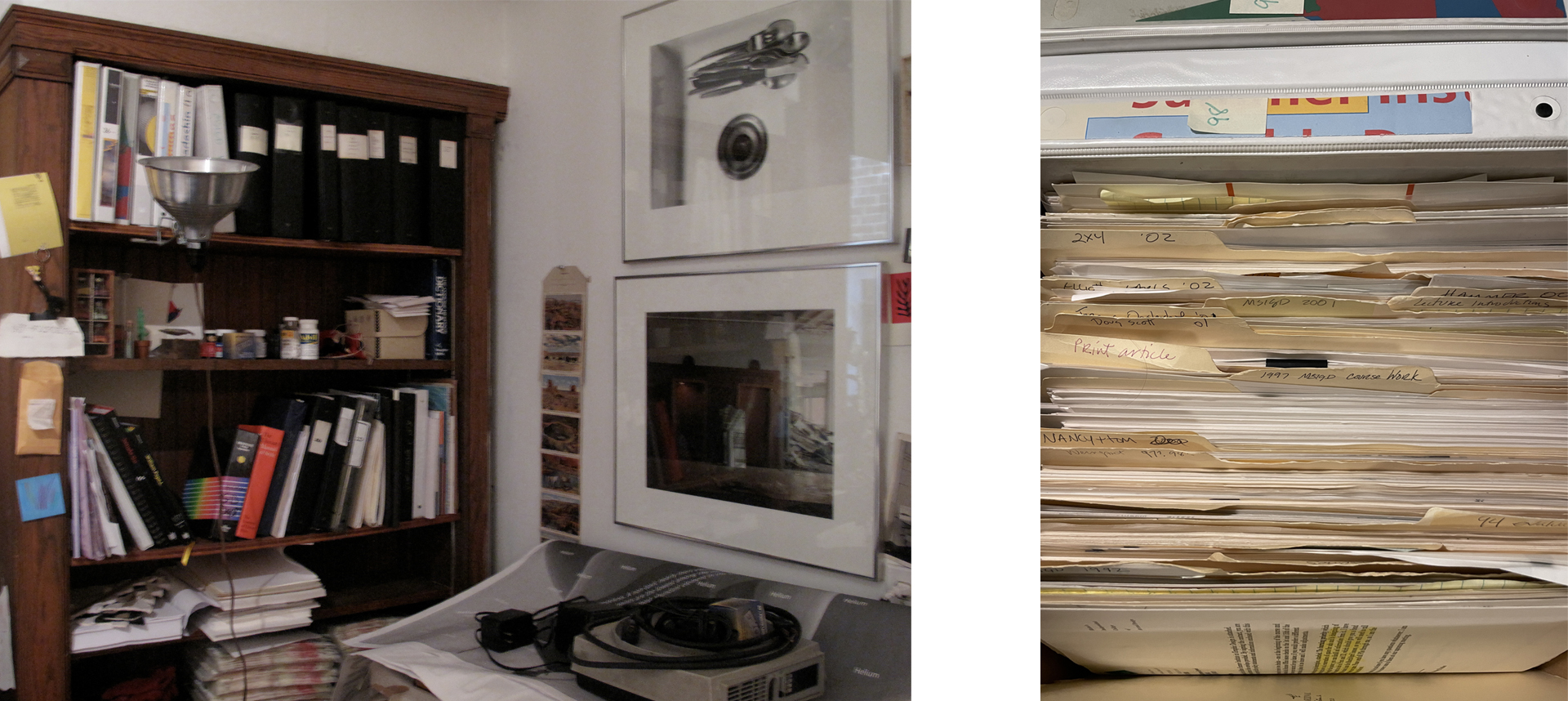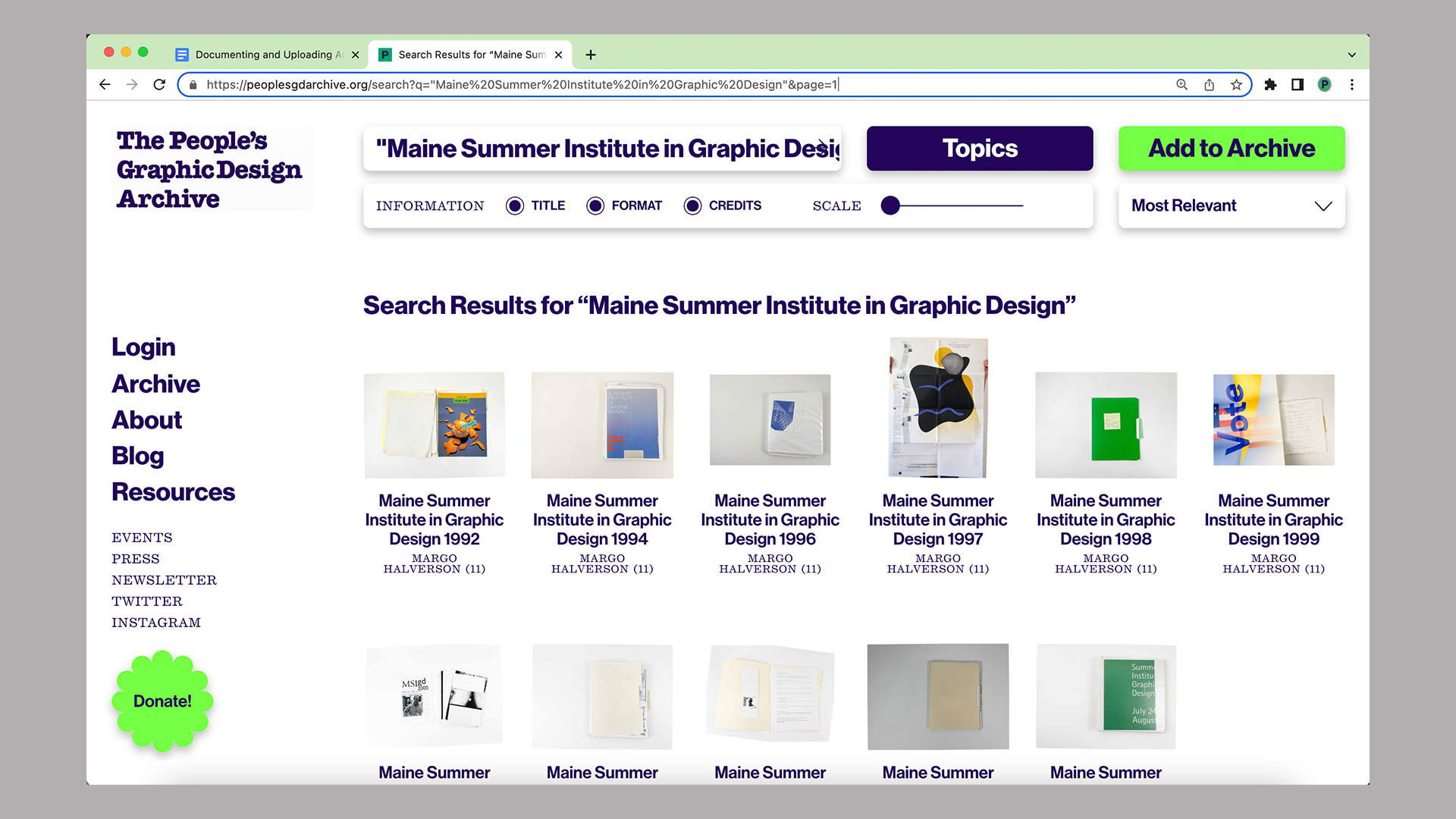Case Study: Documenting & Preserving a Design History Treasure Trove Made Easy!
Almost a year ago, the amazing design educator, Margo Halverson, reached out to The People’s Graphic Design Archive (PGDA) while packing up her office at Maine College of Art & Design. The letter read:
I have been a professor of Graphic Design at Maine College of Art & Design since 1990. From 1991-2001 I was Director of the Maine Summer Institute of Graphic Design which was a residency program of foundational skills –vs. the 90’s technology workshops typical of the time (I co-founded DesignInquiry, a non-profit devoted to collaborative research practices and teaching methods).
I am leaving teaching at the end of this academic year and wonder... it seems like the work and details of those 10 years of MSIGD include a rich history of a particular education model. The program included Wolfgang Weingart for 5 years, Dorothea Hofmann for several–it included Swiss, American, then Dutch educators–faculty who were not accessible outside of enrolling in grad programs here or abroad.
(Then I moved the teacher/student profile to a less typically hierarchical one in DesignInquiry & took it out of an institution… another archive lives here!)
I'd love to speak to someone to see what is possible and what would be helpful for this MSIGD archive (I also have a treasure trove of 90's ephemera I'm uncovering in the bit-by-bit office clean out!)

We were enthralled that Margo recognized PGDA as a place where this valuable material could be preserved. It was also perfect timing for us. This could be an ideal project to test how organizing, documenting, and uploading an entire archive could be made easy. Confronting boxes or binders of material can be daunting and often stands in the way of getting material preserved! Our proposal to Margot was to use this project as a case study. Fortunately for us she agreed.
Next, we contacted Letterform Archive’s librarian, Kate Long, for advice and expertise on the archiving process. She explained that the process begins by looking at how the material is already organized. It could be binders, boxes, and/or folders. Focus on one thing at a time, like a folder. Take photos of items —even using a smartphone—or scan the material, but document the material by the existing arrangement. Don’t reorganize it!
Once the documentation was completed, we wanted to figure out what the upload experience to the PGDA site by users might be like. Earlier testing has shown us that people can easily become overwhelmed and discouraged if there are too many fields to be completed. Kate advised that we provide limited fields: Title, description, creator, year, and tags. We could offer a separate, more advanced section for adding additional data.
We were ready to begin the testing with Margo.
She had binders of material organized by year from 1992–2002. Each binder was divided into sections for each of the faculty who taught that year. For example, in 1996 the instructors were Wolfgang Weingart, Deborah Sussman, and Nancy Skolos/Thomas Wedell and each section included correspondence, budgets, participant lists, promotional material, etcetera.
To document each binder, we agreed that she’d set up a copy stand-like situation, then photograph selected pages. The individual jpegs were put in a single folder labeled by year. To support Margo, we brought on an intern, Sebastian Scheib who turned the jpegs into readable PDFs. This meant we had a great representation of each binder, the material was searchable, and the upload to the People’s Graphic Design Archive was a single document! Search “Maine Summer Institute in Graphic Design” on The People’s Graphic Design Archive and see Halverson’s amazing binders that document this remarkable contribution to the history of graphic design pedagogy!

As each binder PDF was uploaded, adding tags was vital. Tags make the material relevant for many different interests—meaning that depending on a search, the Maine Summer Institute of Graphic Design binders would show up.

Now that we had a successful process that others could use, our final step was to create a page to outline the simple steps to organizing, documenting, and uploading large bodies of material. Once again, timing was on our side as CalArts, where I teach, provided a summer Research Fellow, Ella Rosenblatt, to work with us on this tutorial. Thanks to Ella, we now have Archiving Fast & Easy (as well as other tutorials under Resources that she developed). Simple instructions make researching and documenting graphic design history and adding to the archive a wiz! We hope you'll add your own design history treasures to The People’s Graphic Design Archive a shot—whether it’s a single item or entire trove! Reach out if you have questions.